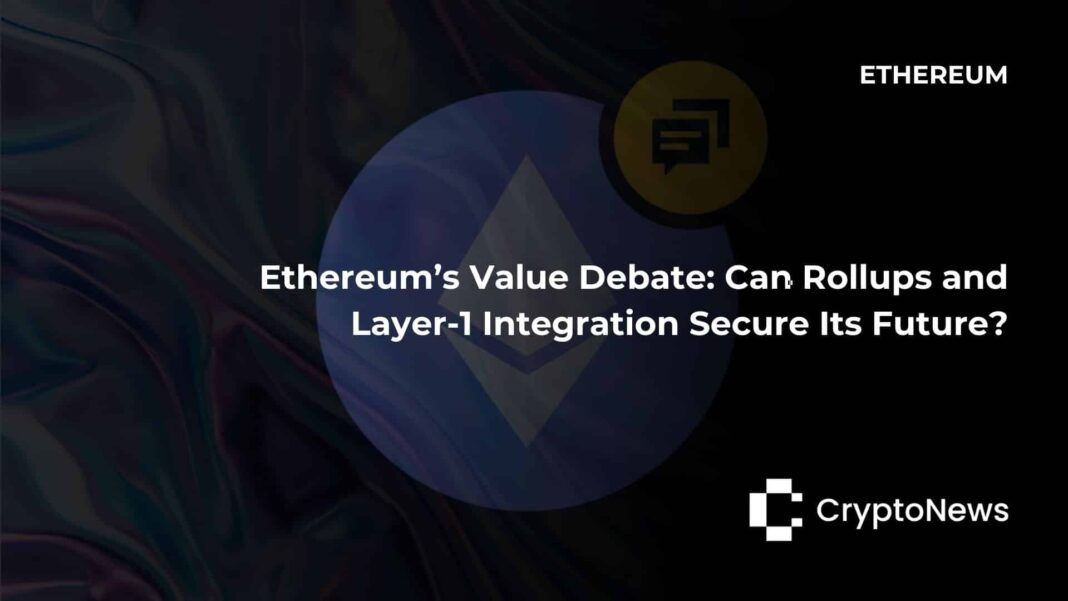As Ethereum continues evolving into a rollup-centric ecosystem, its position as the leading smart contract platform faces increasing scrutiny. While major upgrades like Dencun have improved scalability and efficiency, concerns about long-term value capture persist, especially with rising competition from alternative Layer-1 (alt-L1) blockchains like Solana and Sui. This shift has sparked critical discussions about Ethereum’s economic sustainability and future relevance.
Rollups: Boosting Scalability but Impacting Revenue
Ethereum’s adoption of Layer-2 rollups like Arbitrum, Optimism, and Polygon has reduced transaction fees and boosted network efficiency. These solutions offload transactions from Ethereum’s main Layer-1 (L1), using it only for data availability (DA) and security settlements.
However, this shift comes at a cost. Lower fees on L1 mean reduced ETH burn rates under Ethereum’s fee-burning mechanism EIP-1559, which aims to control inflation by burning a portion of gas fees. With fewer transactions processed directly on L1, Ethereum’s fee revenue has dropped, raising concerns about potential ETH supply inflation if network demand doesn’t grow rapidly.
Alt-Layer-1 Blockchains: The Competitive Threat
Ethereum’s challengers like Solana, Avalanche, and Sui are aggressively expanding. These monolithic blockchains offer faster transactions and lower costs, making them attractive to decentralized app (dApp) developers. A notable example is Uniswap, which recently announced plans to launch its own app-specific blockchain called Unichain, reflecting a broader industry trend toward custom blockchain ecosystems.
Alt-L1 blockchains appeal to developers looking for tailored solutions that avoid Ethereum’s growing reliance on third-party rollups. This has prompted concerns that Ethereum may struggle to retain top-tier projects if competitors continue offering superior scalability and reduced transaction fees.
Balancing L1 and L2 for Long-Term Success
Ethereum’s developers face a strategic dilemma: Should they double down on rollup adoption or reinforce L1’s direct utility to sustain value capture? Upcoming upgrades like Pectra aim to redefine Ethereum’s core infrastructure by improving network efficiency, security, and data processing capacity.
The goal is to ensure Ethereum remains economically sustainable, even with rollups handling the bulk of transactions. If successful, these updates could drive increased network activity, leading to higher ETH burns and reduced inflation risk.
Looking Ahead: A Critical Crossroad
The future of Ethereum hinges on successfully integrating rollups without losing L1’s core relevance. If Ethereum can balance rollup adoption while securing direct usage through new upgrades, it could retain its status as the dominant decentralized financial ecosystem.
However, failure to address declining L1 fees and competition from alt-L1s could weaken Ethereum’s market position, leaving room for competitors to capture a more significant share of the blockchain economy.
For more information about the ongoing debate click here.
Stay updated on Ethereum’s evolving roadmap and blockchain industry trends by following reliable sources like Ethereum Foundation and Binance Research for the latest insights and analysis.

